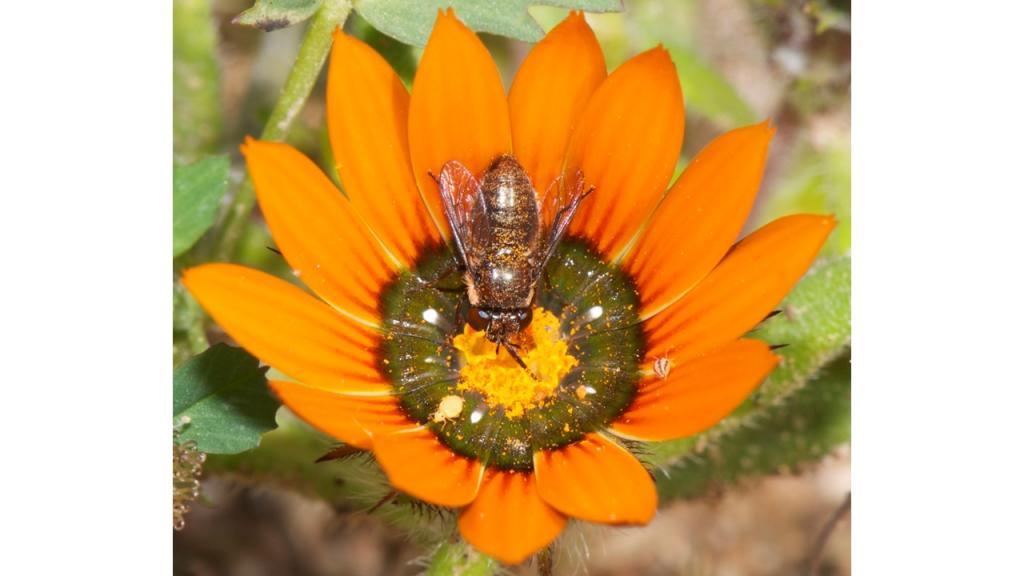
Lead supervisor: Beverley Glover, Plant Sciences
Co-supervisor: Allan Ellis, University of Stellenbosch
Brief summary:
In this exciting project you will work as part of a team to understand the development and evolution of sexually deceptive petal spots in a South African daisy, and to explore how they influence pollinator behaviour in the field.
Importance of the area of research concerned:
The enormous species diversity of the angiosperms was described by Darwin as “an abominable mystery”. Part of the explanation lies with the ways in which different plant species are reproductively isolated from one another, as a result of divergence of floral morphology and consequent differences in their interactions with pollinating animals. This project aims to understand plant radiation and speciation by developing an integrated understanding of the morphological, functional and evolutionary processes underlying evolution of the sexually deceptive petal spots in the daisy genus Gorteria. This system is considered an example of evolution in action, as the geographically distinct populations also have distinct floral morphologies which encourage reproductive isolation.
Project summary :
This project aims to understand the evolution and development of sexually deceptive petal spots on daisy flowers, as a model for understanding flower diversity more generally. Gorteria diffusa produces raised dark spots at the base of 1–3 ray florets. These structures are mimics of small bee-flies (Megapalpus capensis) that are attracted to the petal spots and show an aggregating, feeding or mating response. Petal spot morphology, number and position is extremely variable in Gorteria, so we will explore the developmental genetic basis of these differences, their function and their evolution.
What will the student do?:
Gorteria diffusa varieties differ in number of spots; number of highlights and papillae within the spot; and amount of anthocyanin. You will study how the genes controlling the various parts of petal spot development function in each of these varieties, using standard molecular genetic approaches. You will explore the evolution of petal spots in a phylogenetic context by assessing whether the Gorteria petal spot genes play a role in spot development in related daisy species. You will explore how variation in petal spot morphology and distribution influences pollinator foraging behaviour and thus contributes to plant fitness, using field work in South Africa with the native fly pollinator.
References - references should provide further reading about the project:
Thomas, M., Rudall, P., Ellis, A., Savolainen, V. & Glover, B.J. 2009. Development of a complex floral trait: the pollinator-attracting petal spots of the beetle daisy, Gorteria diffusa (Asteraceae). American Journal of Botany 96, 2184-2196.
Ellis, A., Brockington, S., de Jager, M., Mellers, G., Walker, R. & Glover, B.J. 2014. Floral trait variation and integration as a function of sexual deception in Gorteria diffusa. Philosophical Transactions of the Royal Society Series B. 369, doi: 10.1098/rstb.2013.0563
Kellenberger, R., Ponraj, U., Delahaie, B., Fattorini, R., Balk, J., Lopez-Gomollon, S., Müller, K.,Ellis, A.& Glover BJ.(2023) Multiple gene co-options underlie the rapid evolution of sexuallydeceptive flowers inGorteria diffusa.Current Biology33, 1502-1512.
Applying
You can find out about applying for this project on the Department of Plant Sciences page.